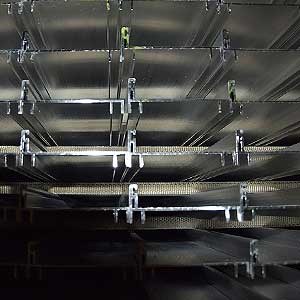The short answer is yes, aluminium can be welded. As for the full answer, well, this alloy can present some thorny challenges. Aluminium alloys conduct heat fairly well, plus they possess a low melting point. Those two material characteristics narrow the welding window, as it were. Still, when the prescribed procedures are adhered to, the challenges can be overcome. The metal then melts, joins, and a strong connection is formed.
Adopting MIG Welding Techniques
Expect specialized skills and high-end welding tools when an aluminium welding project is addressed. The services of a Tungsten Inert Gas welding rig are mandated here, for GMAW (Gas Metal Arc Welding) equipment produces a superior joint when aluminium is the subject alloy, even when the metal sections are manufactured from thinner materials. Granted, that requirement suggests a top-notch equipment rig, but does it really imply an expert operator? Again, the answer is yes, for the thermal characteristics of aluminium aren’t as easy to read as a comparable steel workpiece.
Addressing Thermal Characteristics
This alloy doesn’t change colour as it reaches its melting temperature, plus it’s coated with an invisible oxide membrane. In other words, it’s hard for a novice welder to register actionable cues as the metal approaches its joining temperature. Seasoned welders recognize these unique thermal properties. They know how the alloy reacts to each welding technique, know how the metal melts and puddles, and most definitely know what to look for as the properly formed weld joint cools. Can aluminium be welded? That was the initial question, and we now have the full answer. The lightweight alloy does accept contemporary welding techniques, but only when the right equipment and a well-versed operator undertakes the work.
Describing the Weld Procedure
Unlike a ferrous jointing process, the aluminium surfaces require preparation. Curiously, that oxide coating has a higher melting point than the underlying pure alloy. In order to solve this issue, the surface has to be prepped, usually with a steel wire brush or an etching solvent. Now that the weld surfaces are exposed, the TIG equipment can get at the oxide-free weld faces. From here, the soft metal is preheated, then the weld is performed quickly so that thermal conductivity issues don’t undermine the quality of the final weld joint.
Essentially, the unique properties of aluminium alloys are welcome in industrial and commercial applications. However, a handful of those material characteristics will hamper the welding process. Unless the operator has a firm knowledge of the required techniques, including the prep work that goes into optimizing the welds, then the failure rate encountered here will likely soar. So, while aluminium can be welded, it takes great skill and GMAW proficiency to really do this process justice.
